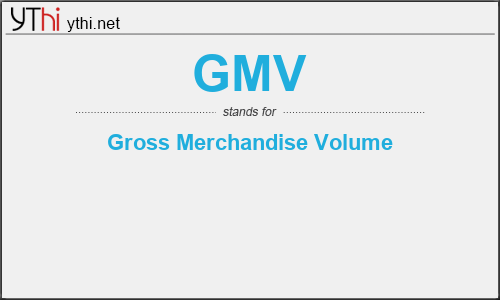What does GMV mean? What is the full form of GMV?
The full form of GMV is Gross Merchandise Volume.
Gross Merchandise Value (GMV), also referred to as gross merchandise volume, is the total amount of sales a company makes over a specified period of time, typically measured quarterly or yearly. GMV is calculated before accrued expenses are deducted. Accrued expenses include costs associated with advertising/marketing, delivery costs, discounts, and returns.
Gross Merchandise Value is a metric most commonly used by e-commerce companies. It functions primarily as a comparative financial metric for such businesses, enabling them to review total sales volume from one recording period (whether it’s four times per year or once per year) to the total sales volume from another recording period. Ultimately, the metric is designed to help companies understand and put a figure on the growth of their business in terms of sales.
GMV is measured in dollars. Most e-commerce companies, especially when they first became popular, used the metric instead of revenue and/or sales data. Ultimately, using GMV as a standalone reference or instead of other metrics became widely considered as ineffective. Today, e-commerce companies typically utilize GMV in combination with other sales and revenue metrics to understand how their company is operating and growing.
Gross Merchandise Value can be calculated in a number of different ways. The simplest and most often used formula is given below:
Gross Merchandise Value = Sales Price of Goods x Number of Goods Sold
GMV, using the calculation above, can be seen to also represent gross revenue. For example, if an online company sells 15 customized notebooks at $10 per notebook, the GMV would be $150.
GMV
means
Gross Merchandise Volume![]()
Translate Gross Merchandise Volume to other language.


Leave a Reply
You must be logged in to post a comment.